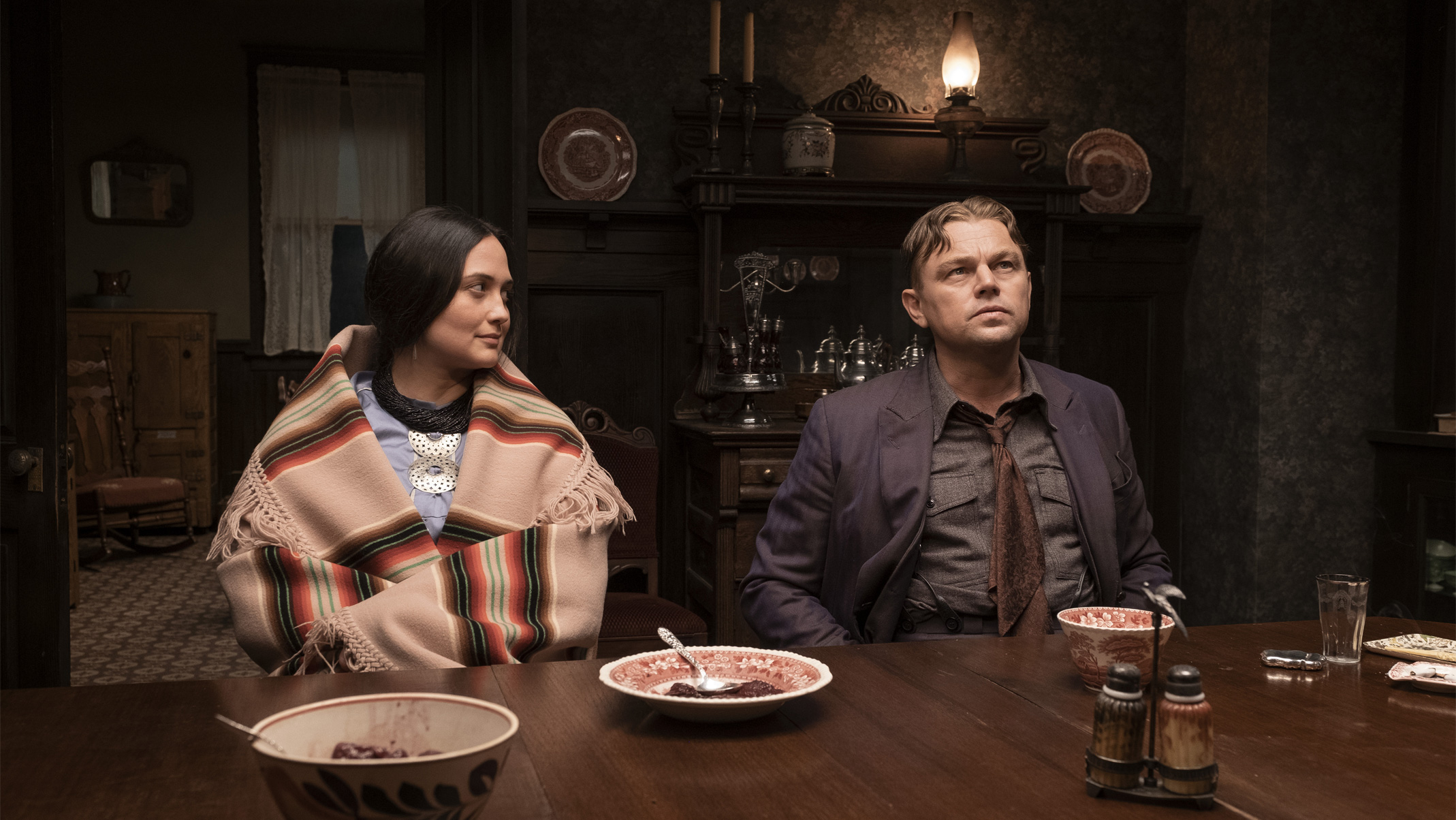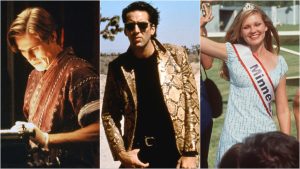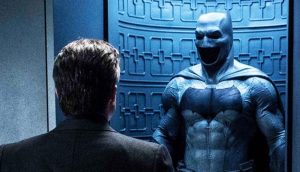
Killers of the Flower Moon sees director Martin Scorsese tell the story of a series of murders that plagued the Osage Nation in the 1920s. Based on the David Gran book of the same name, Killers of the Flower Moon is more than just one of the best movies of 2023. It’s a sweeping epic about the United States’ history of corruption that also manages to tell the story of a truly doomed “romance” while shining a light on events that had previously either been ignored or widely misrepresented.
Yet despite the movie’s good intentions and nearly three and a half hour runtime, it doesn’t quite capture everything you need to know about these sobering historic events. For that matter, Scorsese’s decision to modify its source material’s structure by focusing more on the relationship between Mollie and Ernest Burkart and revealing the identity of the conspirators early on—while also downplaying the specifics of the FBI’s investigation—naturally resulted in a few pieces of historical information being modified or omitted.
So, if you’re planning on watching (or re-watching) Killers of the Flower Moon now that it is streaming via Apple TV+, here are a few of the more notable facts you should know about the true story that the movie doesn’t quite get around to.
The Extent of the Osage’s Wealth (and How They Acquired It)
The Killers of the Flower Moon movie doesn’t spend much time on the period of history in which the Osage initially acquired their tremendous wealth from the oil found on their land. While that’s understandable given the dramatic desire to get right into the murders, that part of the story is quite fascinating in its own right.
To make a very long story slightly shorter, the Osage certainly did not stumble upon the oil by sheer luck. While it’s true that the land they were forced to live on was seen as worthless in the eyes of many white officials, the Osage quickly spotted signs of potential oil and mineral deposits when scouting their new home. Between those signs and their knowledge of how other tribes had previously been mistreated by the government, the Osage leaders made a point of negotiating for mineral rights when discussing the terms of their move to the land. What was likely seen as a largely meaningless provision became incredibly significant when oil was discovered on the Osage’s land in the late 1800s.
On that same subject, the movie doesn’t entirely capture just how valuable the oil find was. From 1901 to 1950, the Osage tribe received roughly $300 million from their mineral rights, which would be the equivalent of about $4 billion today. For further context, that makes the Osage oil discovery more valuable than all of the gold discovered during the United States gold rush.
The Number of Osage Murders and Murderers
Though Killers of the Flower Moon certainly doesn’t shy away from portraying scenes of violence (it’s a Martin Scorsese movie, after all), the film arguably undersells the number of Osage tribe members and associated allies who were probably murdered as a result of the oil profits.
It’s been popularly suggested that around 24 people were murdered during the so-called “Reign of Terror” (the events portrayed in the film which largely took place between 1921 and 1926). However, that number has long been the subject of some debate. Due to the secretive nature of many of the murders (many of them were made to look like natural deaths), inherent flaws in the reporting/investigation process at that time, and old-fashioned corruption and racism, it’s likely that the initially reported number of murders was wildly inaccurate. Renewed reports suggest that there were likely more than 50 Osage and Osage-related murders during that time period. Others (including Killers of the Flower Moon author David Grann) argue that hundreds of Osage were murdered between the discovery of oil in the late 1800s and the 1950s.
On that note, the Killers of the Flower Moon book ends with a haunting epilogue that sees Grann try to pick up the case, so to speak, and investigate the murders with the help of modern resources and historical context. His findings not only lead him to believe that we had previously drastically underestimated the number of murders but the number of murderers as well. Not only does Grann identify more culprits who may have directly participated in the Reign of Terror murders and got away with it, but also several William Hale-like power brokers who may have orchestrated murders from afar. The film seemingly hints at that revelation during the scene in which Leonardo DiCaprio’s Ernest Burkhart is confronted by a room full of men during the events of his trial. The implication seems to be that each of those individuals was either involved in the murders or otherwise still stood to benefit from them and allowed them to continue.
The Fledgling Early Days of the FBI
One of the most significant differences between the Killers of the Flower Moon book and film is the book’s focus on the early days of the FBI and how the investigation into the Osage murders reshaped the organization. In fact, the full title of the book is “Killers of the Flower Moon: The Osage Murders and the Birth of the FBI.” To summarize, a sizable portion of the book follows FBI agent Tom White and is essentially told from his perspective. Not only does that format offer us more insight into the details of the investigation but it allows Grann the chance to better explore the politics of the FBI’s origins.
As Grann explained, the upstart organization (which was then known as the Bureau of Investigation) faced widespread public scrutiny thanks partially to controversial decisions made by then-director J. Edgar Hoover. Actually one of those controversial decisions saw Hoover and the FBI initially try to investigate the Osage murders by using a known criminal as an undercover agent. Instead the “agent” went on to commit a robbery and murder a police officer. Following that incident, Hoover tried to give control of the investigation back to state authorities in order to wash his hands of the situation. However, mounting political and public pressure forced him to eventually launch a more substantial investigation into the matter.
So the investigation into the Osage murders wasn’t just one of the earliest major cases in FBI history, but a case that the FBI desperately needed to solve if it was to justify its existence, methods, and leadership. Speaking of which…
The Impact and Abilities of Tom White
Though Jesse Plemons certainly makes an impression through his portrayal of FBI agent Tom White in Killers of the Flower Moon, the movie arguably underplays White’s impact on the short and long-term events of the story.
White was a Texas Ranger before joining the FBI (or BOI, as it was known) in 1917. Like many early FBI agents, he was caught somewhere between his own experiences and the methods that Hoover wished to standardize and popularize as part of the FBI protocol. However, in the case of the Osage murder investigations, White’s resolve, resourcefulness, and experience investigating crimes with similar geographical and social circumstances made him an invaluable asset. White’s decision to largely rely on information gathered from undercover agents in various positions throughout the community soon proved to be an especially valuable part of the lengthy (almost two years) investigation.
Though White was in constant contact with the FBI during his investigation, he was afforded what may now be considered an unusual amount of leeway over the nature of the investigation and his methods. That speaks to both the respect White garnered as an investigator and officer, and Hoover’s desire for the FBI to “solve” the case no matter what. It has also been argued that by placing so much of the initial responsibility on White, Hoover could always deflect some of the responsibility from himself and the organization if needed. Of course the events that followed certainly helped popularize that particular theory.
The FBI’s Propaganda Machine
While serious doubts remain about both the number of Osage that were murdered as part of the Reign of Terror era (and the number of murderers that were brought to justice during that time), the FBI was certainly seen as heroes in the years following the investigation. Albeit that’s partially because that’s exactly how Hoover wanted the FBI and himself to be seen.
Hoover wasted little time celebrating the FBI’s successful investigation of the Osage murders. Notice that I say the “FBI’s” investigation rather than “Tom White’s investigation.” While White’s involvement was not entirely ignored in the years that followed, Hoover chose to put himself at the center of the celebrations and promote the whole thing as a victory for the Bureau. Hoover historically never shied away from the spotlight, though his bigger goal in that instance seemed to be to show the country that the FBI was an elevated organization of law enforcement officers that could achieve otherwise seemingly impossible results through professionalism, standardized methods, and, naturally, Hoover’s unrivaled leadership.
Again, we see a glimpse of this piece of history in the movie during the climactic scene in which the aftermath of the Osage murders is enacted via radio play. Such plays were just one of the ways that Hoover tried to promote the FBI’s success via mediums that made the organization appear to be almost superheroic and an irreplaceable part of the government. In fact, in 1959, Hoover supported the release of a major movie called The FBI Story: a glorified collection of “real” FBI cases starring Jimmy Stewart that includes a segment about the Osage murders.
But what about Tom White? Well, White left the FBI not long after the investigation, and it has been suggested that Hoover both welcomed that decision and perhaps softly encouraged it by gradually distancing himself from White. White eventually became a prison warden and only made sporadic contact with Hoover during their respective remaining years. At one point though, White did write to Hoover and ask if he could be a consultant for The FBI Story. Hoover told White he would consider the request but never offered him such a position. However, Hoover did ensure that he gave himself a cameo in the movie.
The post What Killers of the Flower Moon Leaves Out from the True Story of the Osage Nation appeared first on Den of Geek.






